Scuff-Resistant Paint: Long Term Durability, Low Maintenance
Learning Objectives:
- Discuss unique challenges to paint performance, maintenance, and durability in high-traffic commercial environments.
- Describe the impact of scuff-resistant paint on long-term durability and decreasedmaintenance needs in high-traffic areas.
- Compare characteristics of scuff-resistant paint and other coatings often specified for demanding conditions, including two component coatings and pre-catalyzed epoxies, and recognize differences in operational and environmental impacts.
- Evaluate the life-cycle costs of the most durable scuff-resistant paint technologies compared to other coatings currently available for high-traffic settings.
- Evaluate the life-cycle cost of durable scuff-resistant paint compared to other coatings available for high-traffic settings.
Credits:
This course is approved as a Structured Course
This course can be self-reported to the AANB, as per their CE Guidelines
Approved for structured learning
Approved for Core Learning
This course can be self-reported to the NLAA
Course may qualify for Learning Hours with NWTAA
Course eligible for OAA Learning Hours
This course is approved as a core course
This course can be self-reported for Learning Units to the Architectural Institute of British Columbia
The painted surfaces in high-traffic environments come into constant contact with people, furniture, equipment, and a range of other challenges depending on the space. As a result, intensive cleaning has always been accepted as a routine part of maintenance. Frequent retouching, repair, and eventual repainting are inevitable. Even with careful maintenance, many painted surfaces in high-traffic settings can appear worn after only a few months in service.
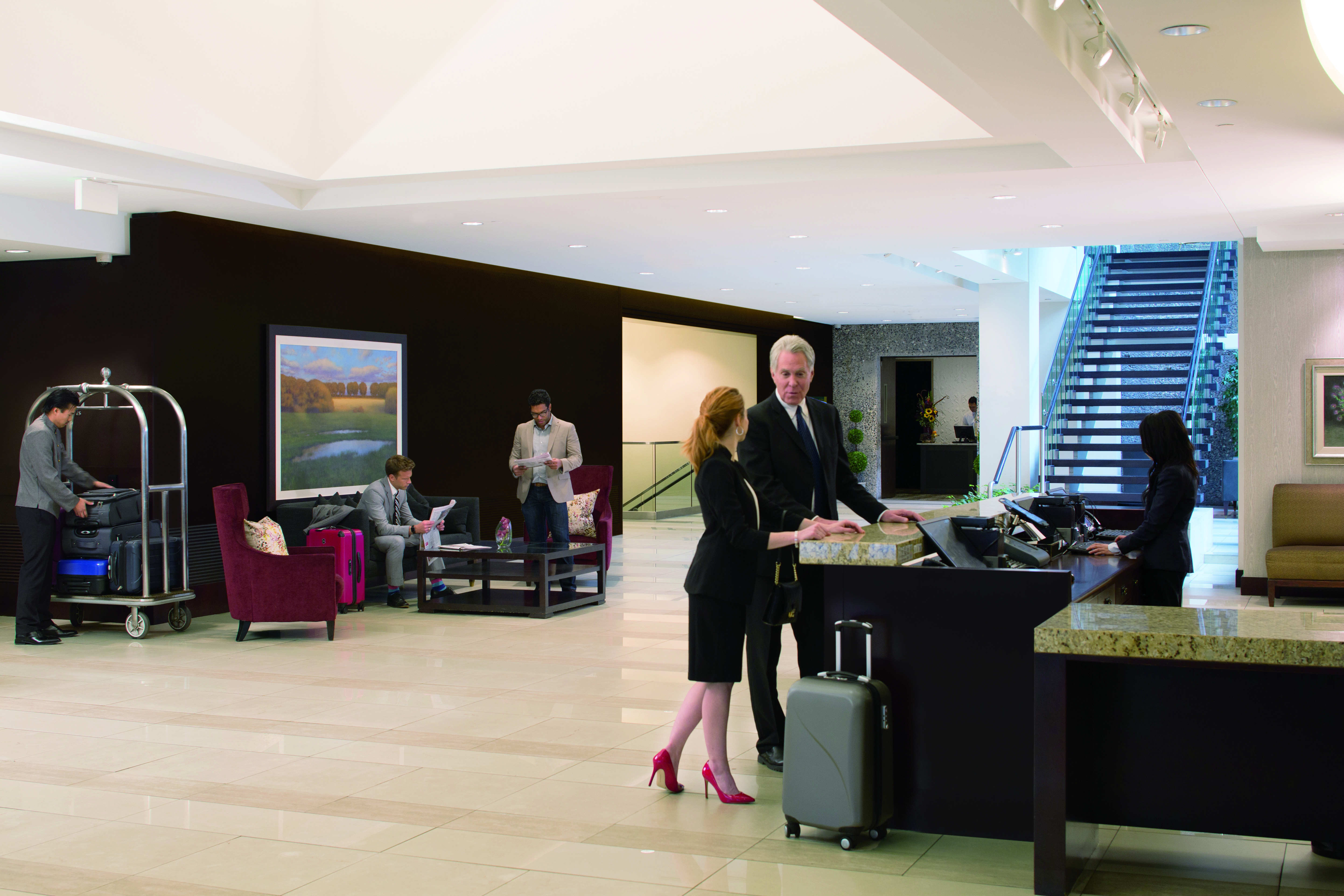
All images courtesy of Benjamin Moore
Scuff-resistant paint repels marks and keeps surfaces looking newly painted in high-traffic areas for extended periods, without the need for frequent cleaning and retouching.
Three major solutions are:
- heavy-duty, two-component epoxies that require measuring, mixing and have a short pot-life;
- pre-catalyzed, one-component epoxies formulated primarily to withstand the frequent hard scrubbing needed to remove daily marks and stains; and
- conventional latex paints in a higher sheen to increase cleansability.
In this course we will examine one-component scuff-resistant latex paint, an effective solution for demanding, high-traffic environments, and will explain how it works, how it differs from other coatings used in high-traffic environments, and how it helps improve all-around performance.
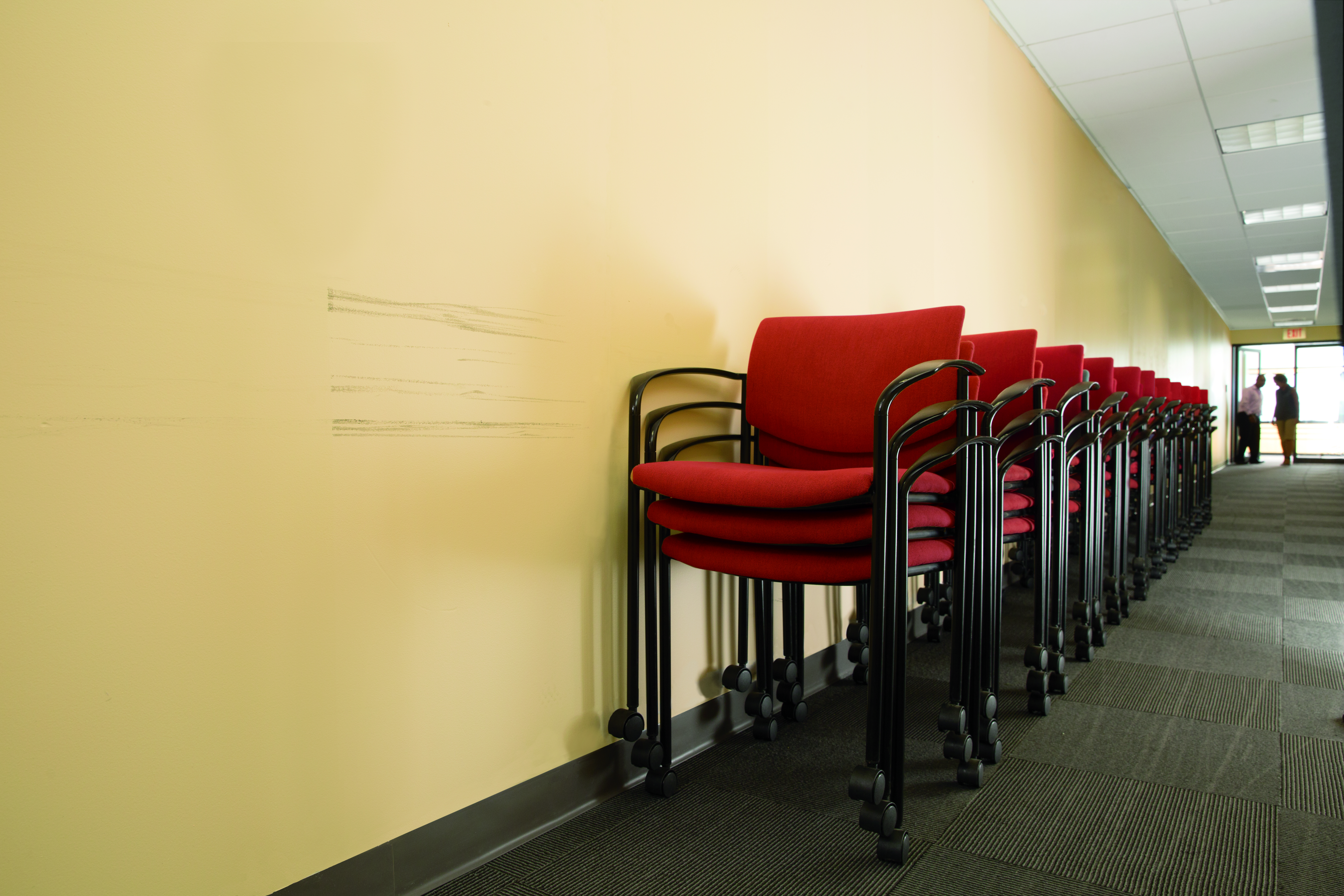
“Scuffs” cover many kinds of disfiguring marks left by the constant flow of people and equipment in high-traffic hallways in corporate facilities.
Demand for Durability
Although in many interiors the most challenging decisions are related to color and design, in high-traffic areas there are additional physical demands. Every day in high-traffic commercial environments there are multiple opportunities for the walls to be rubbed, marked, stained, and scuffed, by impact or simple contact.
The breakthrough formula in this scuff-resistant paint was developed to address challenges faced in these demanding environments. “These are 24/7, high-occupancy, high-abuse environments. Painting is a definite interruption. We were hearing frustration from many companies about serviceability, the real business cost of constant cleaning and repainting, even using heavy-duty epoxies,” says Jim Gorman, senior strategic account manager, national accounts for Benjamin Moore & Co., who works directly with large corporations such as national hotels, restaurants, and retail chains with hundreds of facilities. “We went to our research department with a list of really specific requirements.”
The basic requirements included that the paint: be one-component to avoid the complications and risk of error when mixing two-component paints; have low VOCs; be fast drying and have less odor to permit painting while operations continued with minimal disruption and quick return to service; and have something that wasn’t available in existing paints: the ability to resist scuffs and marks for minimum maintenance and repainting. The paint had to perform in a wide range of high-traffic applications, each with unique challenges:
- Health care: The overall sector includes many different types of settings, from hospitals to outpatient centers to specialty care facilities, as well as a growing number of specialized spaces for an aging population, ranging from varying levels of assisted living to modifications for aging in place. (See “Design for an Aging Population” case study.) Heavy traffic includes not only patients, families, visitors, and staff but also intensive use of equipment: rolling carts, beds, and high-tech treatment and monitoring units. The need for extreme cleanliness is fundamental. Disruption must be severely minimized and areas rapidly returned to service. Paints may need to include antimicrobial additives to inhibit the growth of mold and mildew on the surface of the paint film.
- Education Daily heavy traffic characterizes all types of educational settings, in classrooms, hallways, cafeterias, dormitories, stairwells, gathering spaces, and gyms. Visual design must be appealing and support learning. Many new signature buildings on university campuses in particular feature state-of-the art architecture and performance. But educational buildings of all types generally have strict operation, maintenance, and replacement budgets and select products for long-term durability. For example, at the Independent Day School in Middlefield, CT, scuff-resistant paint was used throughout common areas, hallways and restrooms. According to Jim Rumberger, Director of Facilities, “Clean-up is easy, just a wet wipe. But my favorite aspect of the paint was the fact that I will not have to go back and paint hallways and rooms every year.”
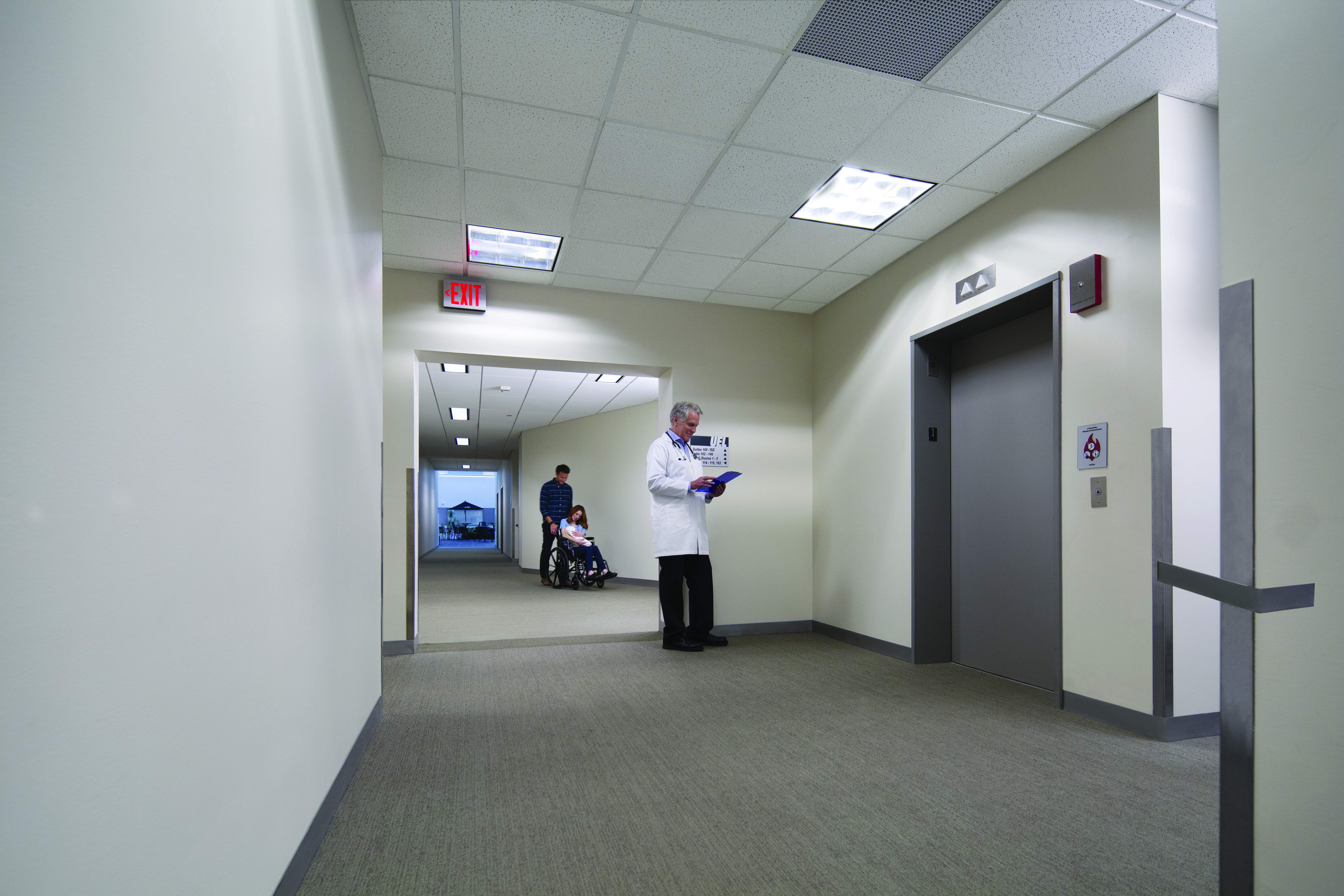
Durable surfaces that maintain cleanliness, a welcoming atmosphere, and a safe, healthy environment are critical in health-care settings.
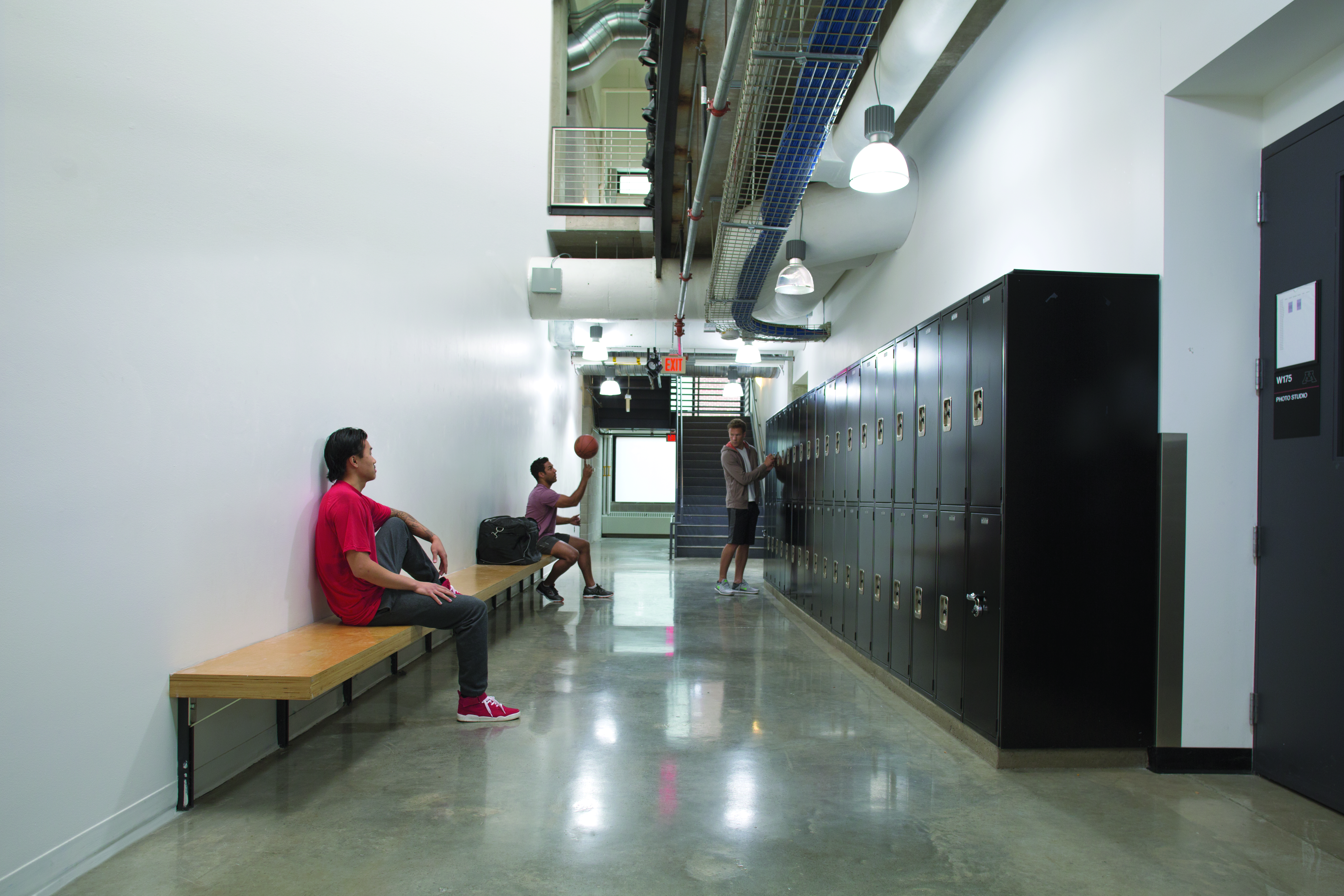
Painted surfaces in all types of educational settings are subject to daily heavy traffic. Scuff-resistant paint maintains clean appearance without frequent scrubbing and retouching.
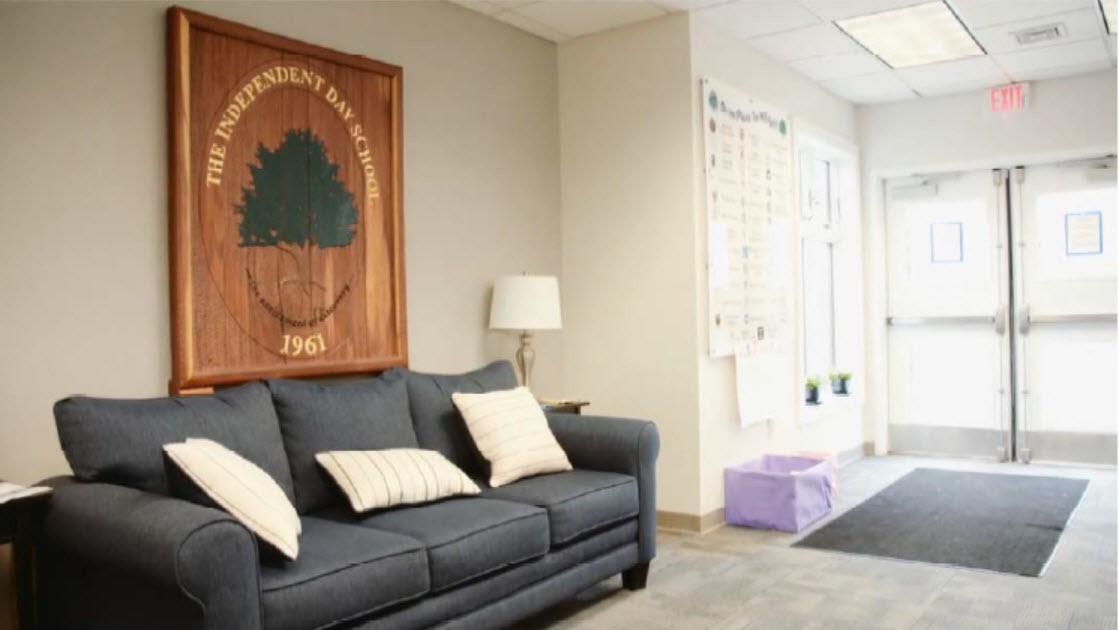
In educational facilities like the Independent Day School, low maintenance requirements for cleaning and retouching and long-term durability are key benefits of scuff-resistant paint formulas.
- Corporate, business, and public buildings: In these types of spaces, from corporate headquarters to restaurants to airport terminals, visual design appeal is a priority. Many large corporations are highly brand conscious, and colors are an essential part of that brand, including when the color scheme is based on bright white. But constant heavy traffic of people and equipment results in severe wear to painted surfaces. Minimizing maintenance and downtime is important. For example, vacant spaces in office buildings must be quickly repainted for new occupants or painted while furnished.
- Hospitality: In these settings, there is a constant flow of guests, service personnel, cleaning, and maintenance crews throughout the facility in guest rooms, lobbies, stairwells, restaurants, and service areas. Furniture and equipment are frequently moving in public spaces and dining areas. In many large hotels, for example, the largest source of unsightly damage to walls is the housekeeping staff, working quickly with large carts and other cleaning equipment. In restaurants, a small space such as the storage area for high chairs, always visible to the public, might be almost impossible to keep presentable and free from marks without frequent retouching. Most areas cannot be closed for more than a short period for painting and maintenance.
- Retail: For stores and retail businesses of all kinds, a welcoming, attractive atmosphere that reinforces the brand of the business is key, but constant heavy traffic and hard wear and tear in fitting rooms, elevators, and employee spaces require exceptional durability. Fitting rooms are a good example of the problems involved. Retailers often refer to these as “revenue rooms,” the points at which most purchasing decisions are made. Yet constant banging from hangers and pocketbooks, marks from shoes and lipstick, and other normal contact with shoppers makes fitting room surfaces difficult to keep attractive. For retailers, every minute the doors are closed for maintenance means lost revenue so the ability to paint and repaint rapidly during business hours for minimal disruption is important. Profit margins for retail business are typically tight, so cost-effective maintenance and reduced labor requirements for frequent touch-ups can make a significant difference. (See “New York City Retail” case study.)
In general, durability priorities vary along a broad spectrum, from residential to commercial to industrial environments.
In heavy industrial facilities or in settings where painted surfaces are subjected to chemicals, heavy abrasion, or consistently high levels of moisture, the increased cost of specialized two-component coatings may be warranted. They require precise measurement, mixing, and curing under highly controlled conditions, not only for the original painting, but also for every time a retouch of any scale is done. (See Comparing Coatings section.)
In the broad range between low-traffic areas and heavy industrial facilities, there is a large segment of high-traffic commercial environments where heavy-duty industrial coatings are not necessary or desirable, but constant wear and tear requires increased durability. For these settings, scuff-resistant paint can be an effective option.
















